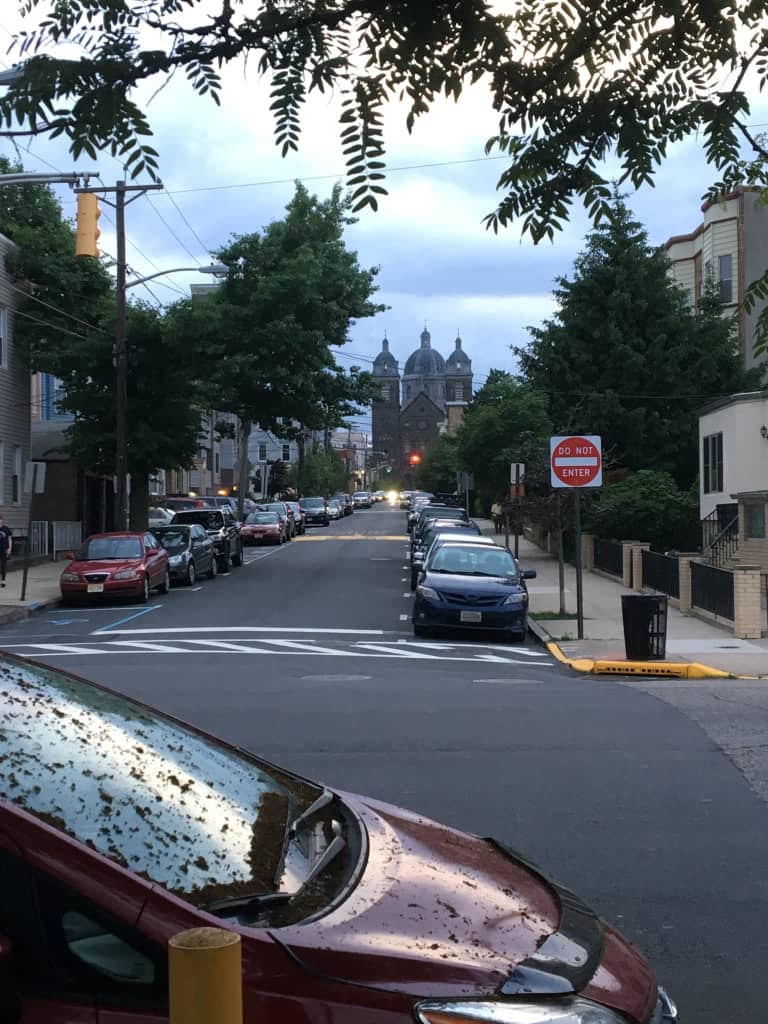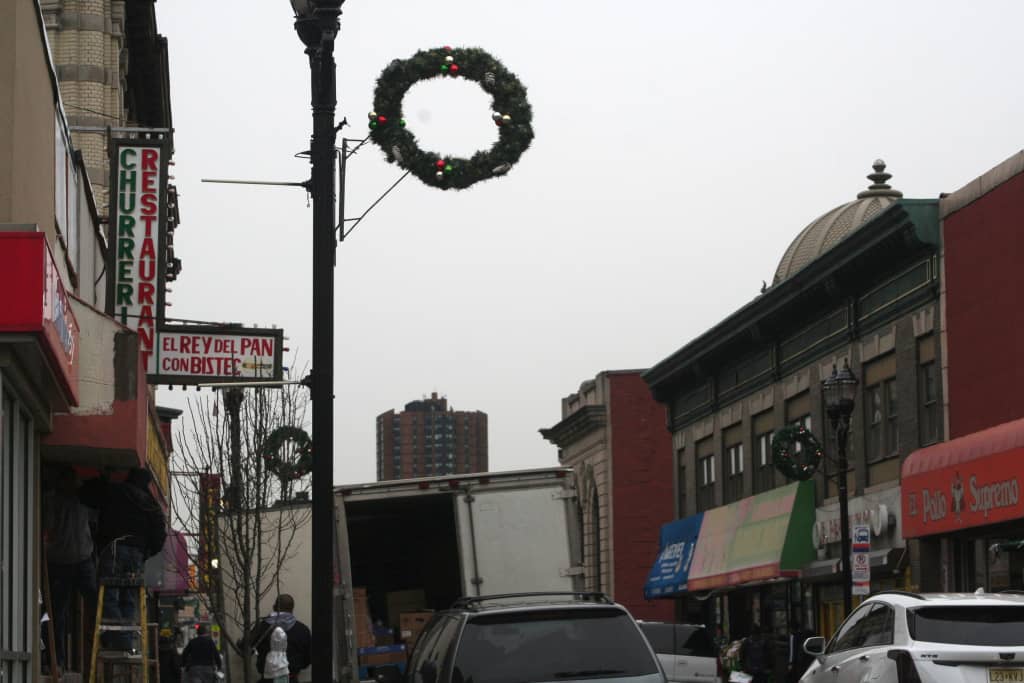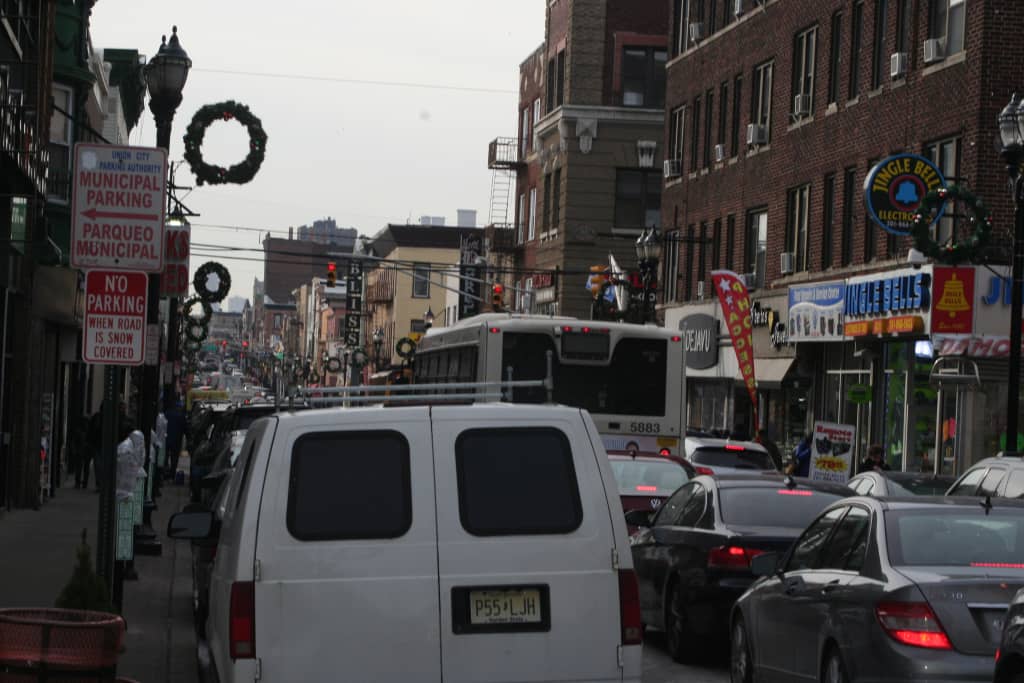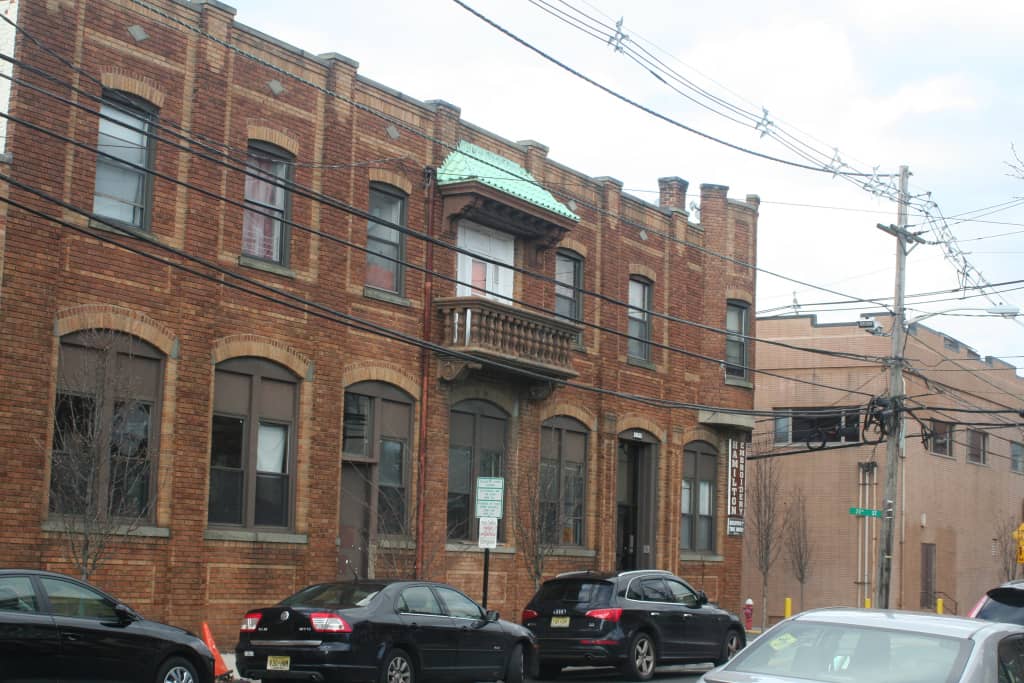REBUILDING THE MACHINE
Alan Tonelson called me back concerned. I had left the economist a message asking if he could help me understand the decline of the embroidery industry in Union City. Perhaps because of the word “decline,” he thought I was planning an obituary.
“I have some statistics you should see,” he said. “the average annual wages and salaries in Hudson County … are not only very high by national standards – and in part that’s because Jersey like the rest of the Northeast is a high cost place – but I’ve got figures here going back to 2001 and I see that average annual salaries in Hudson County have gone up considerably.”
“They’re not only higher than that for New Jersey as a whole, which in turn is much higher than that for the nation as a whole, they’ve gone up faster.”
The tail end of the graph showing unemployment in Hudson County shows striking development.

https://fred.stlouisfed.org/graph/graph-landing.php?g=pLe3&width=670&height=475
Unemployment today is at its lowest point in the county of the last 30 years, and down eight points since the height of the 2008 recession. With its core industry shattered, Hudson County rebounded.
Some will contend that much of this has to do with Hoboken. When I was born there, in 1987, Hoboken was known as a no-man’s land of violent crime and disintegrating infrastructure. The infrastructure is still awful – the city effectively drowned during Hurricane Sandy – but its real estate is now some of the most expensive in the country and the local government actively courts wealthy New Yorkers seeking a cheaper alternative to Brooklyn.
Hoboken and the Jersey City waterfront have contributed to bringing in wealth, yes. Union City’s employment rate lags a bit behind Hudson County and the rest of the country, yes. But it remains only about one percentage point above the county’s unemployment rate and significantly below some of the nation’s hardest-hit post-industrial cities.

While Union City had a 5.5 percent unemployment rate in March 2018, Detroit, Michigan, suffered an 8.7 percent rate; Gary, Indiana, logged a 7.1 percent rate; Youngstown, Ohio, 6.6 percent; and, closer to home, Camden struggled with nearly 10 percent unemployment during a period of accelerating economic growth. Union City’s median annual income is also about $15,000 a year higher than Gary or Detroit and almost double Youngstown’s or Camden’s.
These cities all have one thing in common: their identity was largely defined by a dominating industry that collapsed in the last three decades. Detroit made cars, Youngstown and Gary made steel, Camden made Campbell’s soup and RCA Victor TVs in a manufacturing climate defined by diversity, secretly responsible for many of the things Trenton claimed to “make” on its famous sign across the Delaware River. Union City survived despite being significantly smaller than those cities, and that result invites some soul searching into what made it so resilient.
Karabin, the historian, notes that New York City deserves some credit.
“For one, the proximity to New York City and other places. Whereas maybe the industry doesn’t exist in Union City anymore, places to work like an embroidery factory or a brewery, you could still live here and with reasonable commute get to a place of business,” he responded when asked what saved Union City.
Tonelson, who suggests that deindustrialization resulted in some positive consequences for the country given the advent of high-tech manufacturing, noted that New York was also a manufacturing hub and has lost much of that identity.
“Obviously, New York City is doing great,” he observed. “It’s doing great economically speaking despite the fact that it may have the world’s worst mayor. It’s still a center of finance, it’s still a center of talent … the city is getting richer and richer all the time.”
“Now, you look at upstate New York and it’s a massively different story,” he noted.
But New York City itself has a 4.1 percent unemployment rate currently and an ever-growing homelessness problem (which, following time-honored tradition, leftist Mayor Bill De Blasio has tried to export to New Jersey). It doesn’t have enough jobs for itself, how can it keep afloat the entirety of Union City’s economy?
It can’t, and it hasn’t. Union City has kept itself afloat, largely through hosting a healthy, vibrant urban political machine.
Political machines tend to get a bad rap because of their origins. Machines came about in the mid-19th century as a product of would-be politicians realizing the potential political power of poor and marginalized groups, particularly Italian and Irish immigrants, and galvanizing their vote. Democrats built machines in New York, Chicago, Boston, New Haven, and throughout the industrial North, enjoying support from unions and populist interests against the entrenched powers. While the Democratic Party today has developed a national reputation as the party of Hollywood superstars, tech industry billionaires, and political family dynasties, the urban Democratic machines of mid-1800s cities would have disgusted their heirs.
Particularly in New Jersey, Boston, and Chicago, the machines “organized the electorate in order to control the benefits of public office – patronage, services, contracts, and franchises,” as Steven Erie wrote in the seminal academic work on machine politics, Rainbow’s End. “Bosses purchased voter support with offers of public jobs and services rather than by appeals to traditional loyalties or to class interests.”
Erie rather euphemizes what “traditional loyalties” machine opponents advocated. In Jersey City before Frank Hague took office in 1917, “traditional loyalties” typically meant fanatical anti-Catholic bigotry. He also uses needlessly abrasive language in saying that the bosses “purchased” the vote by promising to make local government work for them. Voters had two choices: the candidate who addressed their concerns and the candidate who did not, and chose accordingly. The New Republic made the same point more charitably:
You might not have been interested in the machine, but the machine was interested in you—how it could serve you, win your vote, win your participation. It provided immigrants with jobs, clothing, and the proverbial turkey for Christmas; got them their citizenship papers; bailed them out of jail; advanced them money for a wedding or a new child; sent them a doctor when they were sick; buried them respectably.
The turkey is a good place to start.
Union City’s mayor, Brian Stack, couldn’t always afford giving away turkeys. When he was 14, already starting to work with Mayor Musto, Stack would give away chickens. Today, he runs what is believed to be the largest Thanksgiving turkey giveaway in the country, feeding nearly the entirety of the 70,000-person city.
It’s a tremendously old-school move for a tremendously old-school politician. Stack, mayor since 2000, has banked his reputation on his “call me anytime, not just election time” persona. Everyone in the city has his cell phone number and anyone can schedule an appointment to ask for help with personal or economic problems. If you don’t go to him, it won’t be long before he schedules a neighborhood meeting in front of your house, standing there and listening to just about anything residents will throw at him.
Stack took the reins on the eve of the guillotine falling on embroidery and has taken to meticulously rebuilding the identity of the city. He tore down Roosevelt Stadium, the sports venue at the heart of the city, to build a new Union City High School – with a stadium on the roof. Union City previously boasted two high schools, one for Union Hill and one for West Hoboken, that Stack turned into middle schools. He built parks in honor of the city’s Cuban, Colombian, and Dominican populations, and an “International Park.” Seemingly every other street has a water park open in the summer for children to play in – the biggest, Firefighters’ Memorial Park, boasts an Olympic-sized swimming pool. His administration also refurbished the downtown library into the Musto Cultural Center and built its replacement, the library at José Martí Middle School (which his administration also built), in the shadow of what was once St. Michael’s monastery, an imposing Catholic historic site that now houses a Korean Presbyterian congregation.

Speaking of Koreans, Union City is also home to a baffling memorial to the Korean “comfort women” of World War II, not far from Celia Cruz Park and the Union City Walk of Fame, which exists.
That’s a lot of jobs.
“This is an example of what happens when trade eliminates good jobs: government grows to fill the gap left by the shuttered plants and collapsed private businesses,” Carney, my colleague, explained. “Trade deals done under the banner of free markets fuel big government.”

For many readers, the idea of the government becoming a city’s economic engine is horrifying. If the government controls the jobs, fairness in wages, and the profit from those jobs, all it takes is one corrupt individual in power to bring the system crashing down. If the government monopolizes the economy, it also monopolizes innovation, creating opportunities for the cliques in power to ostracize politically nonconforming individuals and stunting human scientific and economic development. These are legitimate concerns.
Yet the circumstances surrounding the fall of Union City’s main industry left almost no alternative to a massive local social welfare state. Camden has kept Campbell’s in town with tens of millions in tax subsidies that have yielded questionable-at-best returns in building up the city. Hoboken and Jersey City chose one of those few alternatives: selling itself to outsiders by hauling in millionaire developers to tear down the architectural history of their cities and replace it with luxury condominiums teeming with New York City transplants, who are themselves Midwest or wealthy California transplants with no institutional memory of local culture. Many of the Midwest transplants are a product, in turn, of the option much of the Rust Belt took: do nothing, abandon ship, hope the invisible hand swoops in before you hit the concrete.
COMMENTS







